Best Places to Visit in Spain for First-Timers in 2025

Top Five Best Cities to Visit in Spain for First-Timers
Visiting Spain for the first time is an enchanting experience with its rich history, vibrant culture, and stunning landscapes. Here are the five best places to visit in Spain for first-timers.
Barcelona
Barcelona is a vibrant city known for its unique blend of modernism and history. The iconic Sagrada Familia, a masterpiece by Antoni Gaudí, is a must-see.
Wander through the Gothic Quarter, with its narrow medieval streets, and relax at Park Güell, another Gaudí creation with colorful mosaics and panoramic views.
Barcelona’s beachside location also offers beautiful Mediterranean shores and a lively nightlife scene, making it a dynamic destination for all types of travelers.
This makes Barcelona one of the best places to visit in Spain for first-timers and one of the best cities to visit in Spain.

Barcelona Attractions
Sagrada Familia: This iconic basilica, designed by Antoni Gaudí, is an architectural masterpiece and one of the best places to visit in Spain for first-timers. Its intricate facades and towering spires attract millions of visitors yearly, making it a must-see landmark.
Park Güell: Another Gaudí creation, this park offers colorful mosaics, unique structures, and panoramic views of Barcelona. It’s a whimsical, artistic space that showcases Gaudí’s distinctive style, making it one of the best cities to visit in Spain for first-timers.
Gothic Quarter: Wander through this historic area with its narrow, medieval streets, ancient buildings, and vibrant squares. Key sites include the Barcelona Cathedral and Plaça Reial, making it one of the most interesting places in Spain.
Casa Batlló: A stunning modernist building also designed by Gaudí, featuring a fantastical façade and an interior filled with imaginative designs and vibrant colors. It’s a highlight among the cities in Spain to visit.
La Rambla: This lively street is a hub of activity with street performers, shops, and cafes. Stroll along this famous boulevard and experience the city’s pulse, making it one of the best cities in Spain to visit.

Barcelona Tours
Gaudí Tour: Explore Antoni Gaudí’s works with guided tours that include Sagrada Familia, Park Güell, Casa Batlló, and Casa Milà. These tours provide insight into the genius of Gaudí’s designs and are among the best places to visit in Spain for first-timers.
Bike Tours: Discover Barcelona on a bike tour, a fun and eco-friendly way to see the city’s landmarks, including the beach, Gothic Quarter, and modernist architecture. It’s a great option for visiting the best cities in Spain.
Tapas Tours: Indulge in Spanish cuisine with a tapas tour, visiting some of the best tapas bars in the city. Enjoy sampling various small dishes while learning about local culinary traditions, making it a top choice among places to travel in Spain.
Walking Tours: Join a walking tour to explore neighborhoods like El Born and the Gothic Quarter. Guides provide historical context and stories about the city’s past. These tours are perfect for exploring the best city to visit in Spain.
Hop-On Hop-Off Bus Tours: These convenient tours allow you to see all the major sights at your own pace. The buses stop at key attractions, and you can hop off and explore whenever you like, ideal for first-time visitors to Spanish cities.
4 Barcelona Tours You Will Love
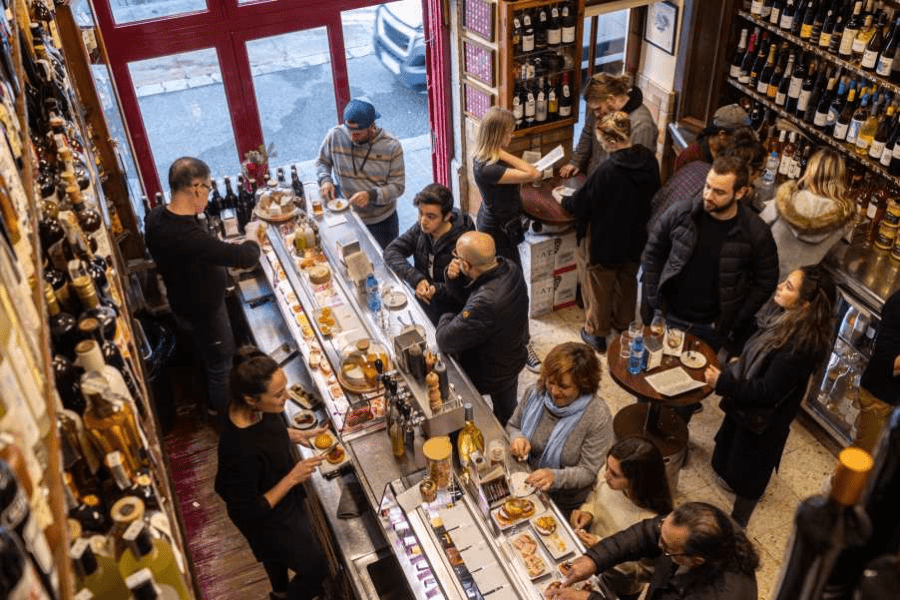
Barcelona Restaurants
El Xampanyet: Located in the El Born neighborhood, this classic bar is known for its cava and traditional tapas. It’s a great place to experience authentic Catalan flavors in one of the best cities in Spain to visit.
Bar Canete: This lively spot serves traditional Spanish dishes focusing on fresh, local ingredients. The vibrant atmosphere and delicious food make it a favorite among locals and tourists, highlighting the best cities to visit in Spain for first-timers.
Quimet & Quimet: A small, standing-room-only bar famous for its montaditos (small sandwiches) and an extensive selection of wines and beers. It’s one of the most interesting places in Spain to enjoy local cuisine.
Cinc Sentits: For a fine dining experience, this Michelin-starred restaurant offers a tasting menu that highlights the best Catalan cuisine with innovative and beautifully presented dishes. It is perfect for those exploring places to travel in Spain.
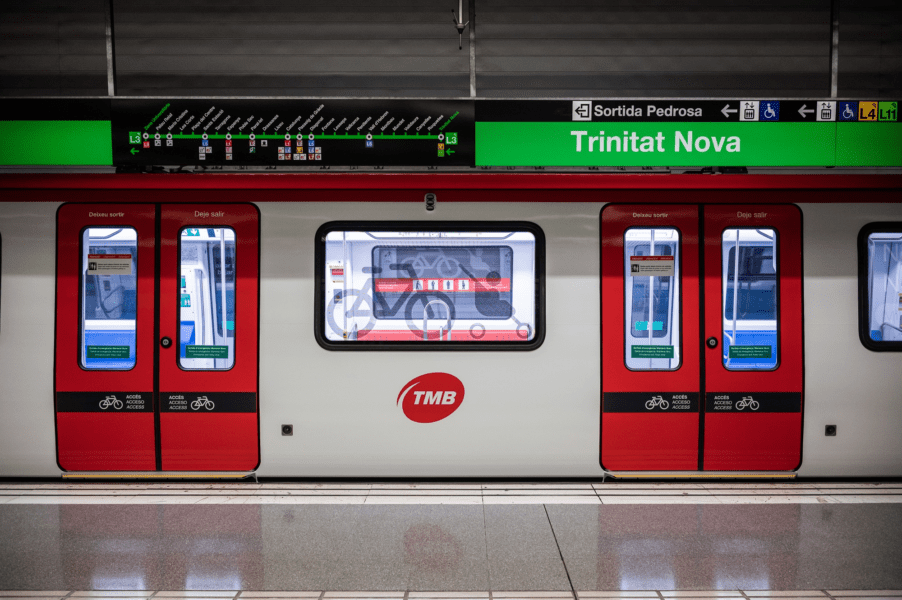
Getting Around Barcelona
Barcelona boasts an efficient and extensive public transportation system, making it easy for first-timers to navigate one of the best places to visit in Spain.
The metro is the quickest way to get around, with eight lines covering most areas of interest.
Buses complement the metro, reaching areas not served by the underground. For a scenic route, trams operate in some parts of the city.
Taxis are readily available and relatively affordable for short trips. Additionally, biking is popular, with many bike rental stations and dedicated bike lanes. Walking is also a great way to explore the city’s neighborhoods, especially in areas like the Gothic Quarter and El Born.
For tourists, the Barcelona Card offers unlimited travel on public transport and discounts on major attractions, making it one of the best cities to visit in Spain for first-timers. The card can cover just the transit system or transit and museums.
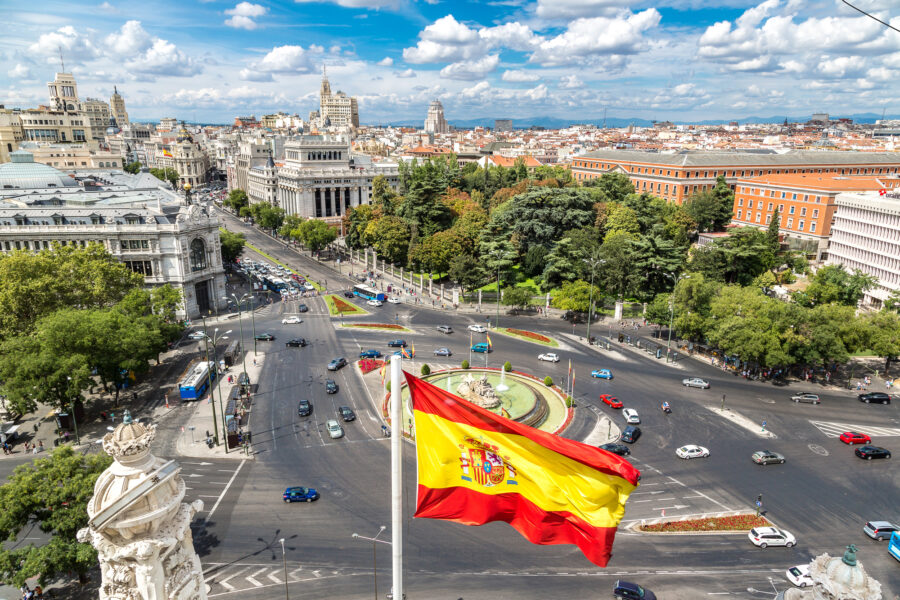
Madrid
Madrid, Spain’s capital, is a cultural and political hub with world-class museums, such as the Prado Museum, which houses masterpieces by Goya and Velázquez.
The Royal Palace, one of the largest in Europe, showcases opulent architecture and stunning gardens. Stroll through Retiro Park, an expansive green space perfect for relaxation.
Madrid’s culinary scene, highlighted by tapas and traditional markets like Mercado de San Miguel, provides an authentic taste of Spanish cuisine. For first-timers, Madrid is one of the best cities in Spain to visit.
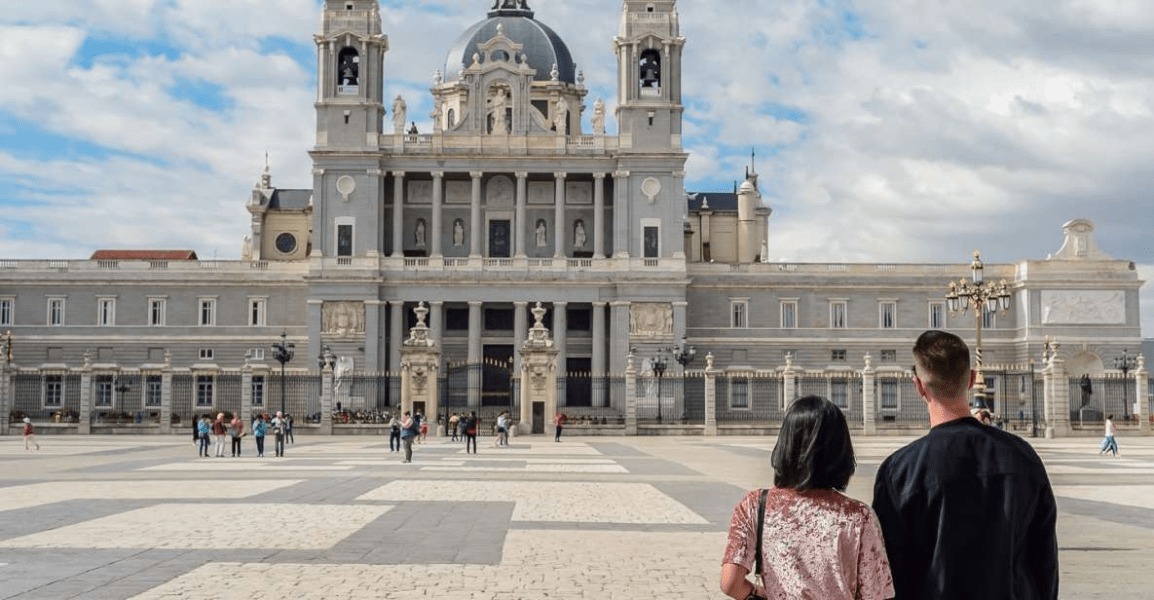
Madrid Attractions
Prado Museum: One of the best places to visit in Spain for first-timers, the Prado Museum houses an extensive collection of European art, including masterpieces by Goya, Velázquez, and El Greco. It’s a must-see for art enthusiasts.
Royal Palace: This magnificent palace is the largest in Europe and offers a glimpse into the opulent lifestyle of Spanish royalty. Explore its lavish rooms, grand staircases, and beautiful gardens.
Retiro Park: A green oasis in the heart of the city, Retiro Park is perfect for relaxing walks, boating on the lake, and visiting the Crystal Palace, one of the most interesting places in Spain.
Plaza Mayor: This historic square is surrounded by beautiful architecture and bustling cafes. It’s a great place to soak in the atmosphere and enjoy traditional Spanish cuisine.
Thyssen-Bornemisza Museum: Complementing the Prado, this museum offers a diverse collection of art from the Renaissance to the modern era, making Madrid one of the best cities in Spain to visit for art lovers.

Madrid Tours
Historical Walking Tour: Discover Madrid’s rich history on a guided walking tour. Visit landmarks like the Royal Palace, Plaza Mayor, and Puerta del Sol while learning about the city’s past.
Tapas and Wine Tour: Experience Madrid’s culinary delights with a tapas and wine tour. Visit traditional bars and taste a variety of tapas paired with local wines.
Bike Tours: Take a bike tour to explore Madrid’s scenic routes and major attractions. It’s a fun and eco-friendly way to see the city, covering more ground than walking.
Art Tour: Delve into Madrid’s art scene with a guided tour of the Prado Museum, Thyssen-Bornemisza Museum, and Reina Sofía Museum, home to Picasso’s Guernica.
Segway Tour: For a unique experience, take a Segway tour around Madrid. Glide through the city’s streets and parks while learning about its history and culture from a knowledgeable guide.
4 Madrid Tours Just For You
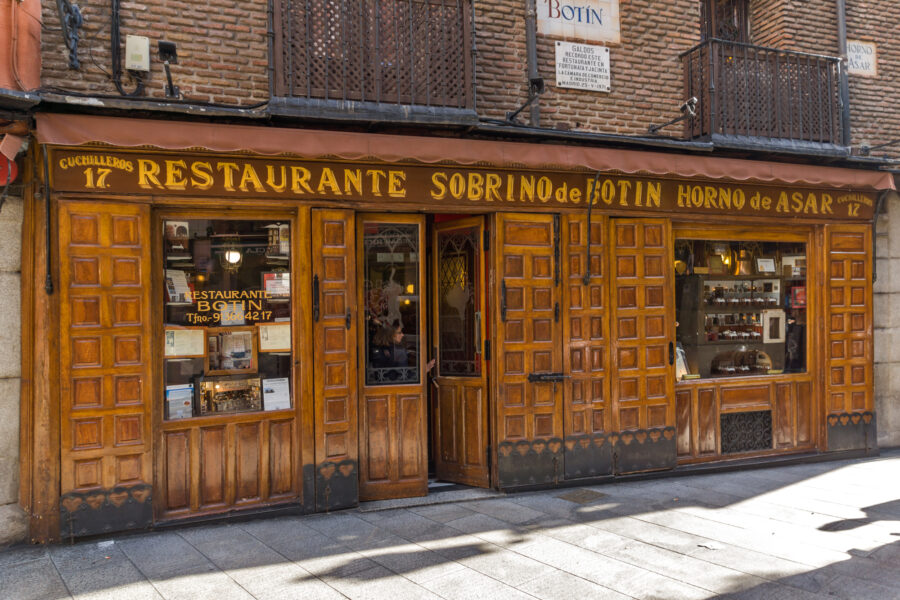
Madrid Restaurants
Botín: Recognized as the world’s oldest restaurant, Botín offers a historic dining experience with its famous roast suckling pig and traditional Spanish dishes.
Casa Lucio: A favorite among locals and celebrities, Casa Lucio is known for its huevos rotos (broken eggs) and hearty Spanish cuisine, making it one of the best Spanish cities to visit for foodies.
Mercado de San Miguel: This vibrant market offers a variety of gourmet foods, from fresh seafood to artisanal cheeses. It’s a great place to sample a wide range of Spanish delicacies.
DiverXO: For a high-end dining experience, visit DiverXO, Madrid’s only three-Michelin-starred restaurant, where chef David Muñoz creates innovative and visually stunning dishes.
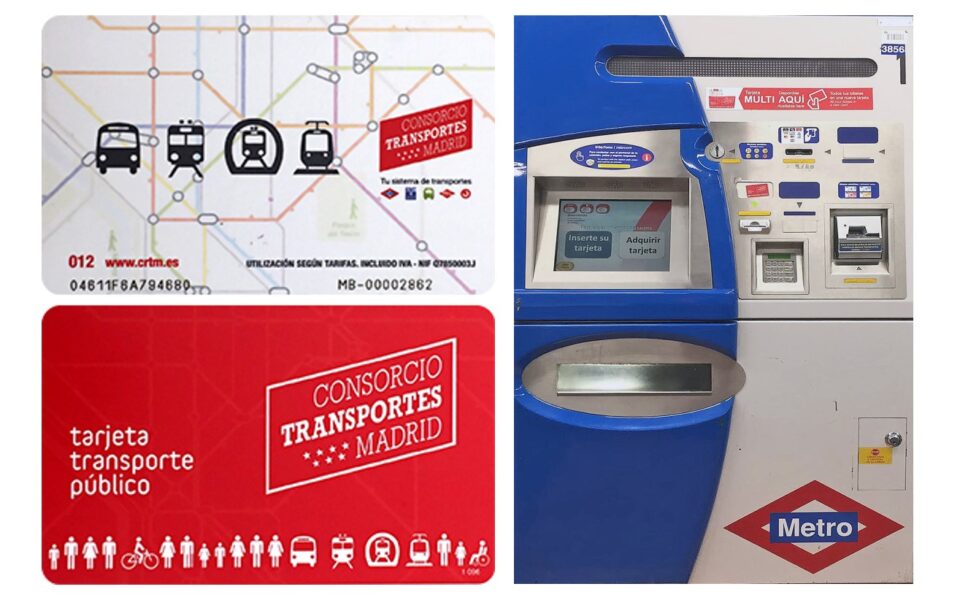
Getting Around Madrid
Madrid boasts an efficient and comprehensive public transportation system, making it one of the best cities to visit in Spain for first-timers.
The metro is the backbone of the city’s transit, with 12 lines covering extensive areas and operating frequently.
Buses supplement the metro, providing access to areas not served by the underground.
Cercanías trains are ideal for short trips to nearby towns and suburbs. Taxis are plentiful and reasonably priced for quick trips around the city.
Biking is becoming more popular, with dedicated bike lanes and rental services available. Walking is also a pleasant way to explore central Madrid’s attractions.
For tourists, the Madrid Tourist Travel Pass or Multi Card when loaded with a Tourist Ticket offers unlimited travel on public transport and discounts at various attractions, making it easier to explore the best places to visit in Spain for first-timers.
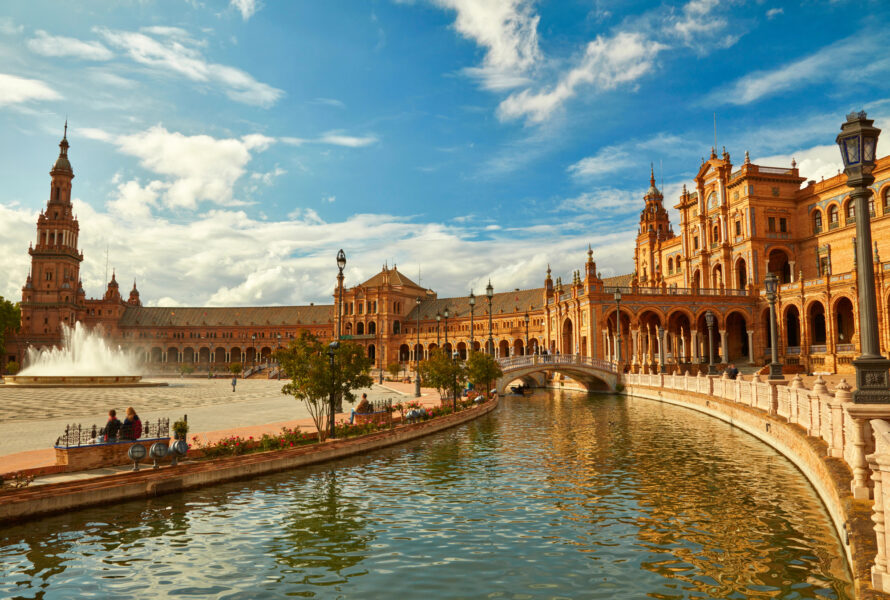
Seville
Seville is famed for its flamenco dancing and Moorish architecture.
The Seville Cathedral, the largest Gothic cathedral in the world, is breathtaking. Its Giralda tower offers panoramic city views.
The Real Alcázar, a royal palace with lush gardens, reflects a mix of Moorish and Renaissance styles.
Visit the Plaza de España, a grand square with beautiful tile work and boating canals.
Seville’s lively festivals, such as Feria de Abril, showcase its vibrant cultural traditions, making it a top city to visit in Spain.

Seville Attractions
Seville Cathedral: One of the best places to visit in Spain for first-timers, Seville Cathedral is the largest Gothic cathedral in the world. Its magnificent architecture and the Giralda tower offer panoramic city views, making it a must-see landmark.
Real Alcázar: This royal palace, blending Moorish and Renaissance styles, is one of the most interesting places in Spain. Its lush gardens, intricate tilework, and historical significance attract countless visitors.
Plaza de España: A stunning example of Spanish architecture, this grand square features beautiful tilework, a large fountain, and boating canals. It’s a picturesque spot in one of the best cities to visit in Spain.
Barrio Santa Cruz: Wander through the charming, narrow streets of this historic Jewish quarter, filled with white-washed houses, flower-filled balconies, and vibrant squares. It’s a highlight among the cities in Spain to visit.
Metropol Parasol: Also known as Las Setas, this modern structure uniquely contrasts Seville’s historical sites. Its wooden design provides panoramic views of the city, making it a notable place to travel in Spain.
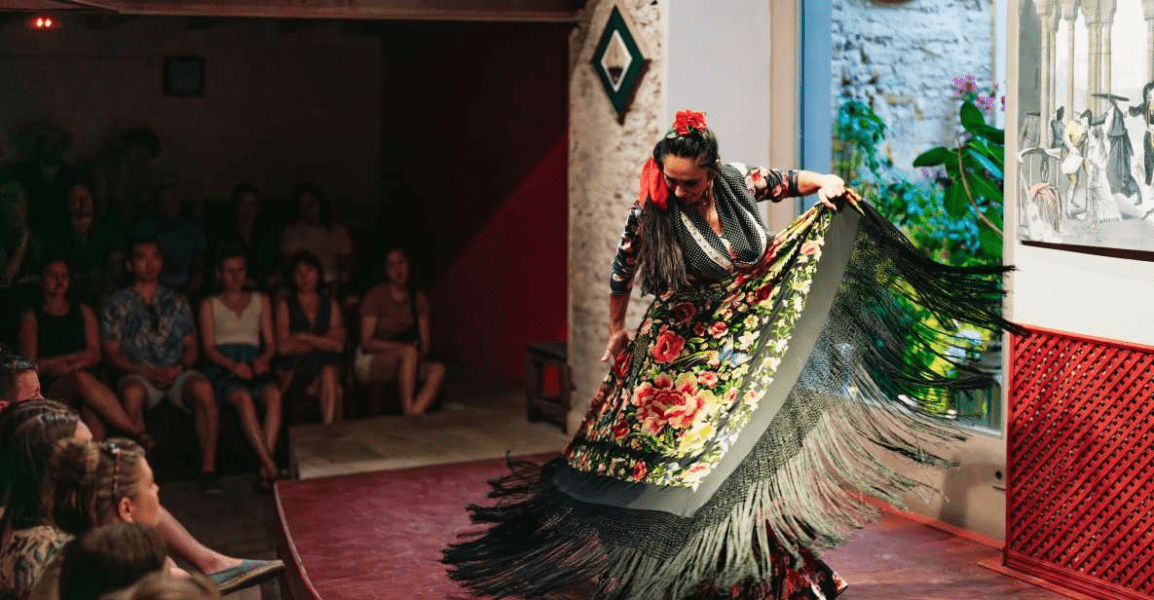
Seville Tours
Flamenco Tour: Experience Seville’s vibrant culture with a flamenco tour. Visit traditional tablaos to enjoy live performances and learn about the history of this passionate dance, a must for the best Spanish cities to visit.
Walking Tours: Explore Seville’s rich history with a guided walk through the city’s key landmarks, including the Seville Cathedral, Real Alcázar, and Barrio Santa Cruz. It’s a perfect introduction to one of the best cities in Spain to visit.
Tapas Tours: Indulge in Seville’s culinary delights with a tapas tour, visiting some of the best tapas bars in the city. Sample a variety of small dishes and learn about local food traditions, which are ideal for those looking for the best city to visit in Spain.
Bike Tours: Discover Seville’s scenic routes and major attractions on a bike tour. It’s an eco-friendly way to see the city’s landmarks, including parks and riversides, making it one of the top Spain cities to visit.
River Cruises: Take a relaxing boat tour along the Guadalquivir River, offering unique views of Seville’s skyline and historical sites. It’s a delightful way to experience the best cities to visit in Spain for first-timers.
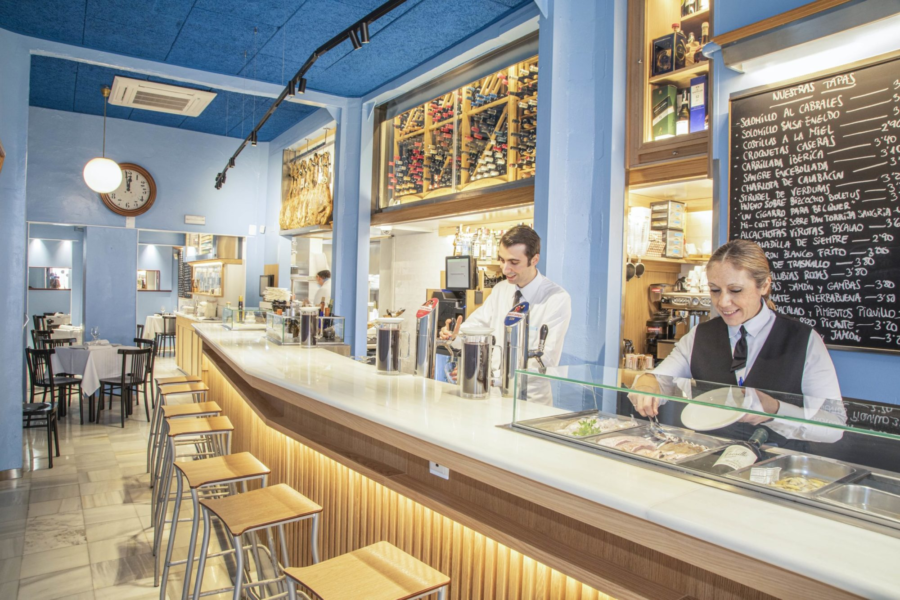
Seville Restaurants
El Rinconcillo: Established in 1670, this historic bar is known for its traditional Andalusian tapas and rustic charm. It’s a must-visit for those exploring the best places to visit in Spain for first-timers.
Eslava: Located in the heart of Seville, Eslava offers creative tapas and a vibrant atmosphere. It’s a favorite among locals and tourists alike, highlighting the best cities to visit in Spain.
La Azotea: With several locations in Seville, La Azotea is renowned for its innovative tapas and modern take on traditional Spanish cuisine. It’s a top choice in the best cities to visit in Spain for first-timers.
Abantal: For a fine dining experience, visit Abantal, a Michelin-starred restaurant offering a contemporary twist on Andalusian flavors. It’s perfect for those seeking interesting places in Spain.
Casa Morales: This traditional bar serves classic tapas in an authentic setting, featuring large wooden casks and a lively atmosphere. It’s a highlight in one of the best Spanish cities to visit.

Getting Around Seville
Thanks to its efficient public transportation system, Seville is one of the best places to visit in Spain for first-timers.
The Seville Metro, inaugurated in 2009, is a compact yet efficient light metro system that spans 11 miles (18 km) and comprises 22 stations.
Despite its relatively small size, the system is designed for ease of use and offers straightforward navigation for passengers.
The metro’s single line strategically links essential areas across the city, facilitating convenient and accessible transportation for residents and visitors.
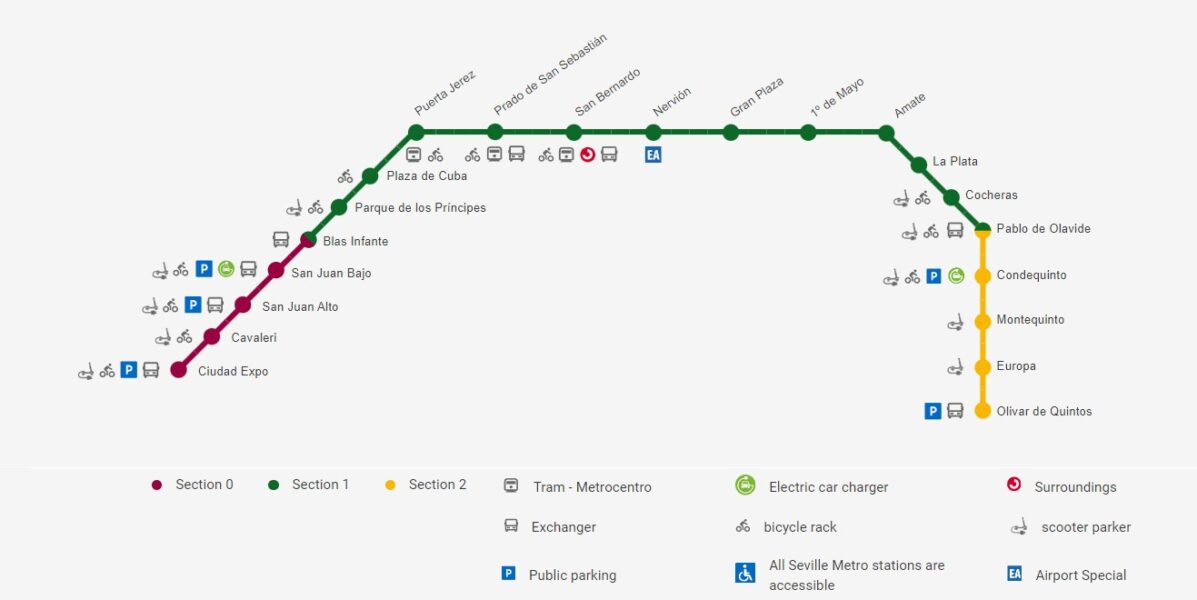
Buses provide extensive coverage throughout Seville, reaching areas not served by the metro. Trams operate in the city center, offering a scenic and convenient way to travel.
Taxis are readily available and relatively affordable for short trips. Additionally, biking is popular, with dedicated bike lanes and rental services available.
Walking is also a pleasant way to explore Seville’s charming neighborhoods and historical sites.
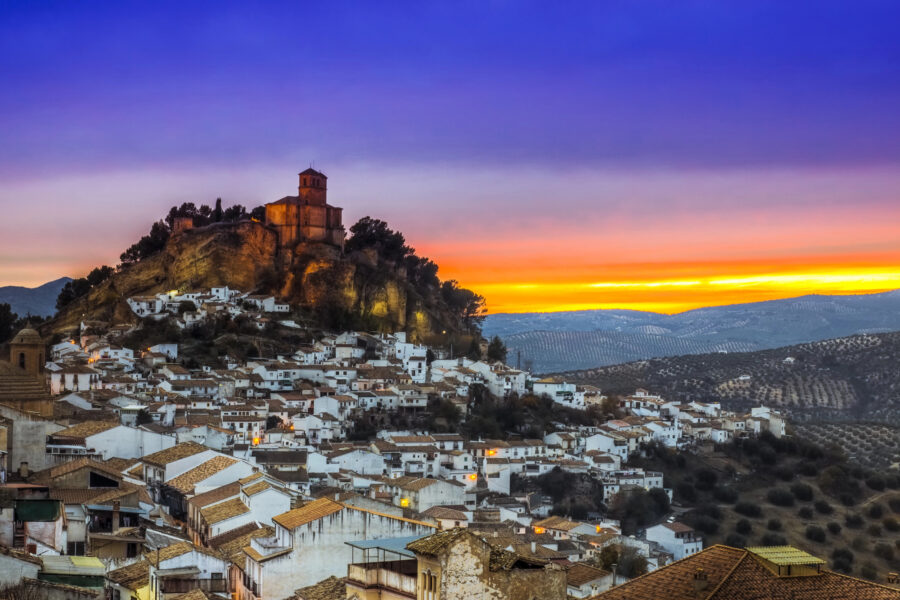
Granada
Granada is home to the Alhambra, a stunning palace and fortress complex that epitomizes Moorish architecture and offers breathtaking views of the city and the Sierra Nevada mountains.
Wander through the Albaicín, the old Moorish quarter with narrow winding streets and white-washed houses.
The city’s blend of Islamic and Christian history is evident in its architecture and atmosphere.
Don’t miss the traditional Andalusian tapas and flamenco performances, which capture Granada’s unique spirit and make it one of the best Spanish cities to visit.
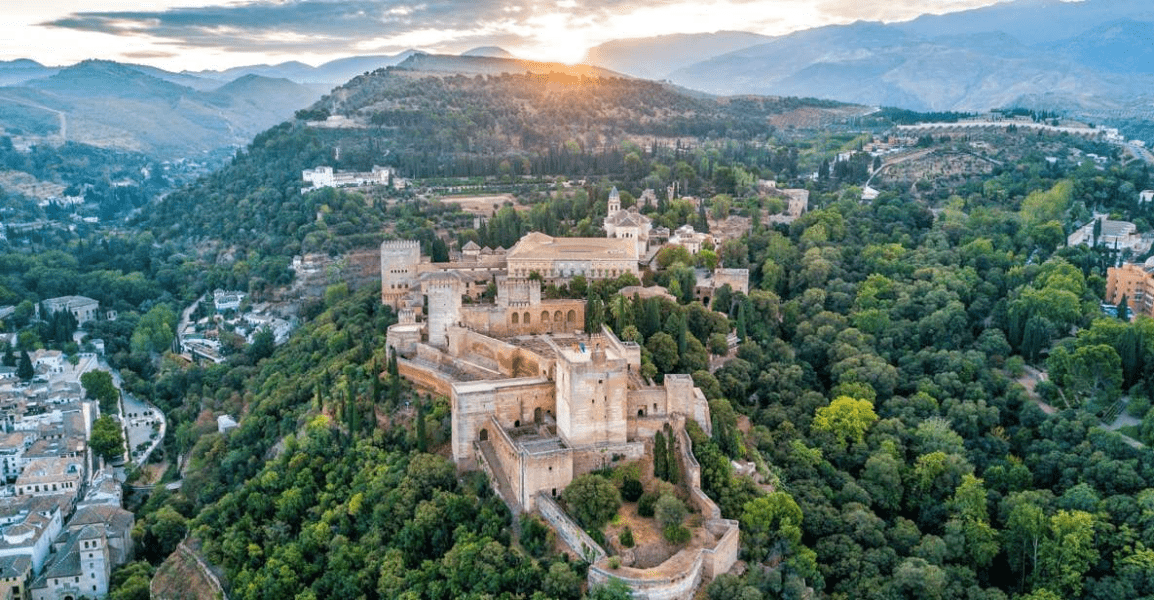
Granada Attractions
Alhambra: The Alhambra is undoubtedly one of the best places to visit in Spain for first-timers. This stunning palace and fortress complex, with its intricate Moorish architecture and breathtaking gardens, offers panoramic views of the city and the Sierra Nevada mountains.
Generalife: Adjacent to the Alhambra, the Generalife was the summer palace of the Nasrid rulers. Its beautifully landscaped gardens and serene patios make it one of the most interesting places in Spain.
Albaicín: This historic Moorish quarter, with its narrow winding streets and white-washed houses, provides a charming atmosphere and spectacular views of the Alhambra. It’s a must-see in the best cities to visit in Spain.
Granada Cathedral: It is a significant landmark Known for its impressive Renaissance architecture. Its grand interior and the Royal Chapel, housing the tombs of Ferdinand and Isabella, highlight this top city to visit in Spain.
Sacromonte: Famous for its cave dwellings and vibrant flamenco shows, Sacromonte is a unique area that offers a glimpse into traditional Andalusian culture. It’s one of the best places to visit in Spain for first-timers seeking cultural experiences.

Granada Tours
Alhambra Guided Tour: Explore the Alhambra with a knowledgeable guide who can provide historical context and detailed insights into its architecture and significance. It’s one of the best ways to experience this top attraction in the best cities to visit in Spain.
Walking Tour of Albaicín and Sacromonte: Discover the rich history and culture of Granada’s old neighborhoods on a walking tour. These tours often include visits to traditional flamenco venues and scenic viewpoints.
Tapas Tour: Indulge in Granada’s culinary delights with a tapas tour. Visit popular tapas bars to sample local dishes and learn about the city’s food traditions and vibrant culinary scene.
Bike Tours: Take a bike tour to explore Granada’s picturesque streets and major attractions. It’s an eco-friendly way to see the city’s landmarks and enjoy its scenic beauty, making it one of the best cities to visit in Spain for first-timers.
Granada Historical Tour: Gain a deeper understanding of Granada’s rich history with a guided tour that covers significant sites like the Granada Cathedral, Royal Chapel, and historic neighborhoods.
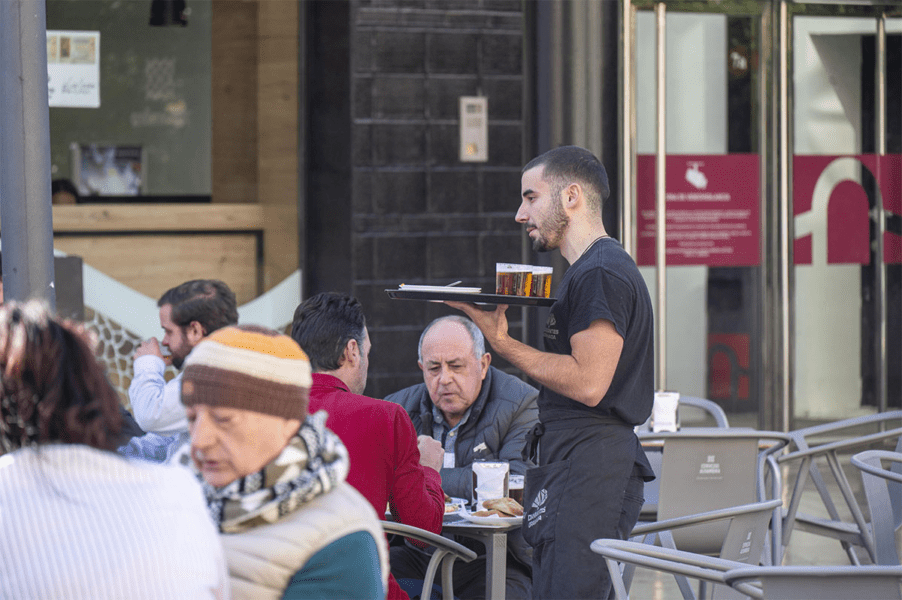
Granada Restaurants
Bodegas Castañeda: Known for its traditional tapas and vibrant atmosphere, Bodegas Castañeda is a must-visit for food lovers exploring the best places to visit in Spain for first-timers.
Los Diamantes: Famous for its fresh seafood tapas, Los Diamantes offers a lively dining experience in one of the best cities to visit in Spain.
El Huerto de Juan Ranas: Located in the Albaicín, this restaurant offers stunning views of the Alhambra and delicious Andalusian cuisine, highlighting Spain’s interesting dining places.
Restaurante Chikito: A historic restaurant known for its traditional Andalusian dishes, Restaurante Chikito provides an authentic taste of Granada’s culinary heritage.
Carmela: This modern restaurant combines traditional Spanish flavors with contemporary techniques, offering a unique dining experience in one of the best Spanish cities to visit.

Getting Around Granada
Granada is one of the best places to visit in Spain for first-timers, with a well-organized public transportation system.
The bus network covers the entire city, making reaching major attractions and neighborhoods easy. The Alhambra Bus specifically caters to tourists visiting the Alhambra and Generalife.
Taxis are readily available and provide a convenient way to get around the city, especially for short trips. For a unique experience, the Alhambra Train offers a scenic route through the city’s historic areas.
Biking is also a popular option, with several bike rental services available.
Walking is highly recommended, especially in the central areas and historic neighborhoods like Albaicín and Sacromonte. This allows you to appreciate Granada’s charm and beauty fully.
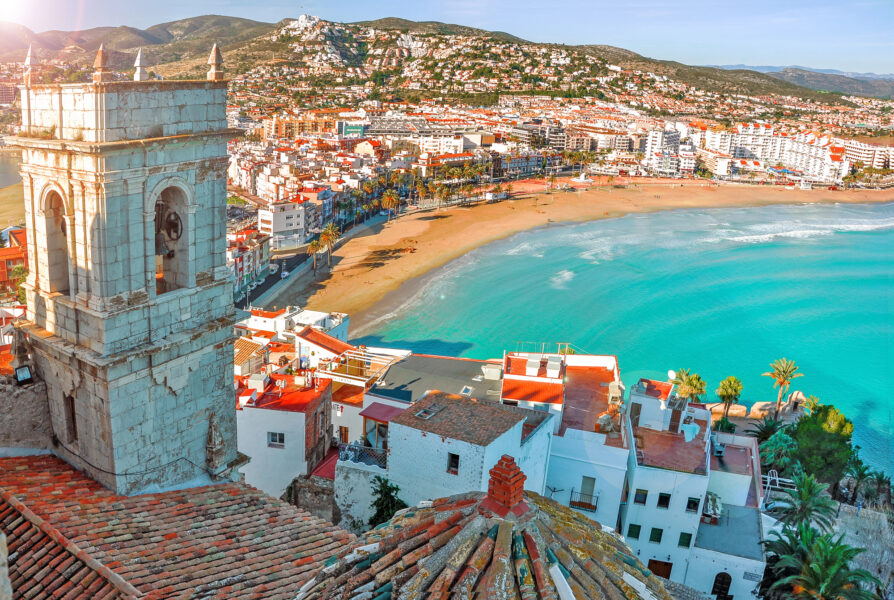
Valencia
Valencia is known for its futuristic City of Arts and Sciences, a complex featuring a planetarium, an oceanarium, and an interactive museum.
The historic central market, Mercado Central, offers a sensory overload of local produce and delicacies.
Explore the Turia Gardens, a sprawling urban park created from a former riverbed. Valencia’s sandy beaches, such as La Malvarrosa, are perfect for relaxation, while the city’s vibrant festivals, like Las Fallas, glimpse local traditions and community spirit.
Valencia is undoubtedly one of the most interesting places in Spain to visit.
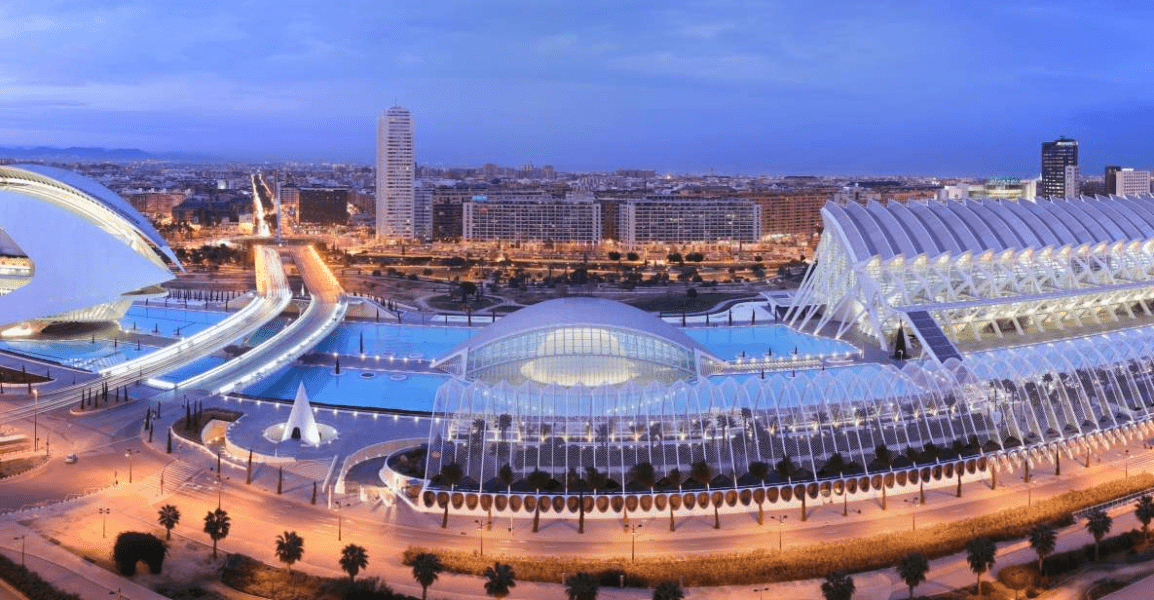
Valencia Attractions
City of Arts and Sciences: One of the best places to visit in Spain for first-timers, this futuristic complex includes a planetarium, an oceanarium, and an interactive museum. It’s a must-see in the best cities to visit in Spain for its stunning architecture and educational exhibits.
Valencia Cathedral: Located in the city’s heart, this Gothic cathedral is famous for housing the Holy Grail. Its mix of architectural styles and the panoramic view from the Micalet tower make it one of the top Spain cities to visit.
Bioparc Valencia: This innovative zoo offers an immersive experience with naturalistic habitats where animals roam freely. It’s an interesting place in Spain for families and animal lovers.
Central Market: One of the largest markets in Europe, this bustling market is a vibrant hub where you can taste local delicacies and buy fresh produce. It’s a highlight among the cities in Spain to visit.
Turia Gardens: This expansive park, created from a former riverbed, is perfect for strolls, picnics, and outdoor activities. It’s a beautiful green space in one of the best cities in Spain to visit.
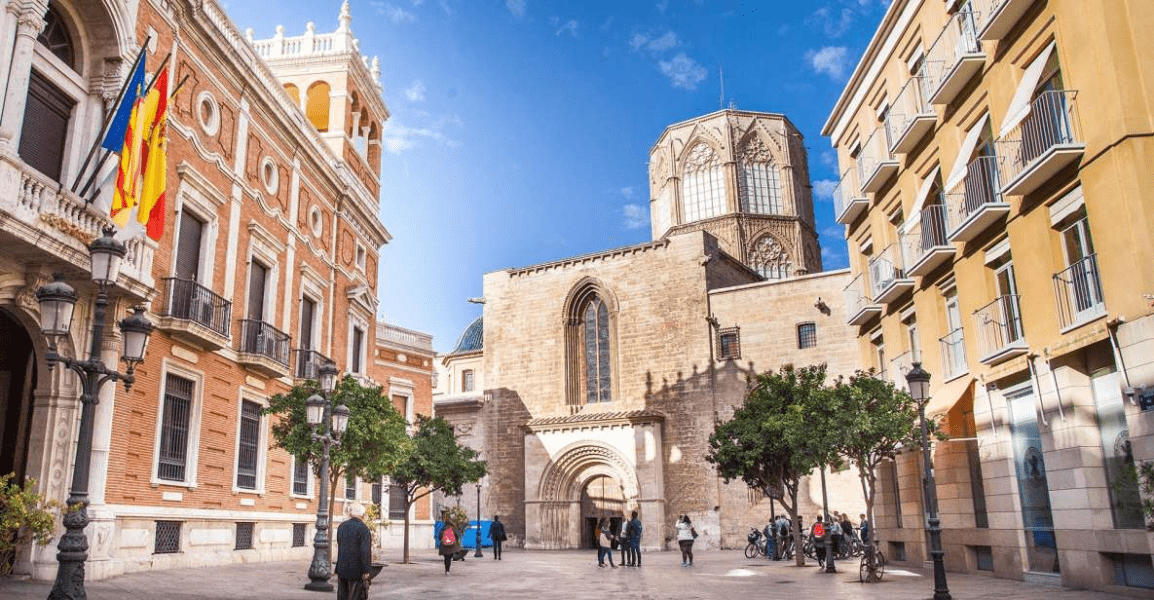
Valencia Tours
Historical Walking Tour: Explore Valencia’s rich history on a guided walking tour. Visit landmarks like the Valencia Cathedral, the Silk Exchange, and Plaza de la Virgen, ideal for first-timers in the best city to visit in Spain.
Bike Tours: Discover Valencia’s scenic routes and major attractions on a bike tour. It’s a fun and eco-friendly way to see the city’s landmarks, including the Turia Gardens and the City of Arts and Sciences.
Tapas Tour: Indulge in Valencia’s culinary delights with a tapas tour. Visit some of the best tapas bars in the city to sample a variety of local dishes, making it a top choice among places to travel in Spain.
Paella Cooking Class: Learn how to make traditional Valencian paella with a hands-on cooking class. It’s a unique cultural experience in one of the best Spanish cities to visit.
Albufera Natural Park Tour: Take a boat ride through this beautiful natural park outside Valencia. It’s a serene escape from the city and a great way to experience Spain’s interesting places.
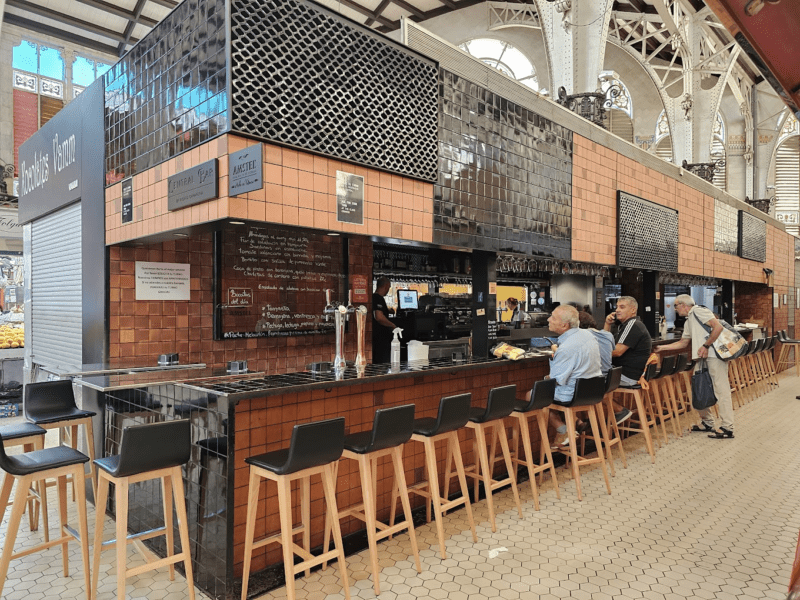
Valencia Restaurants
Casa Montaña: Located in the El Cabanyal neighborhood, this historic tavern is known for its traditional tapas and extensive wine list. It’s a must-visit for food lovers in one of the best cities to visit in Spain.
Ricard Camarena: This Michelin-starred restaurant offers an innovative dining experience with contemporary Mediterranean cuisine. It’s perfect for those exploring the best places to visit in Spain for first-timers.
Central Bar: Located inside the Central Market, this bustling bar serves delicious tapas and sandwiches using fresh market ingredients. It’s a favorite among locals and tourists alike in the best cities to visit Spain.
La Pepica: Famous for its paella, La Pepica is a beachfront restaurant with a long history. It’s a great place to enjoy traditional Valencian cuisine with a view, making it one of the best cities in Spain to visit.
Habitual: Offering modern Mediterranean dishes, Habitual is known for its creative menu and stylish setting. It’s a top choice for dining in one of the best Spanish cities to visit.
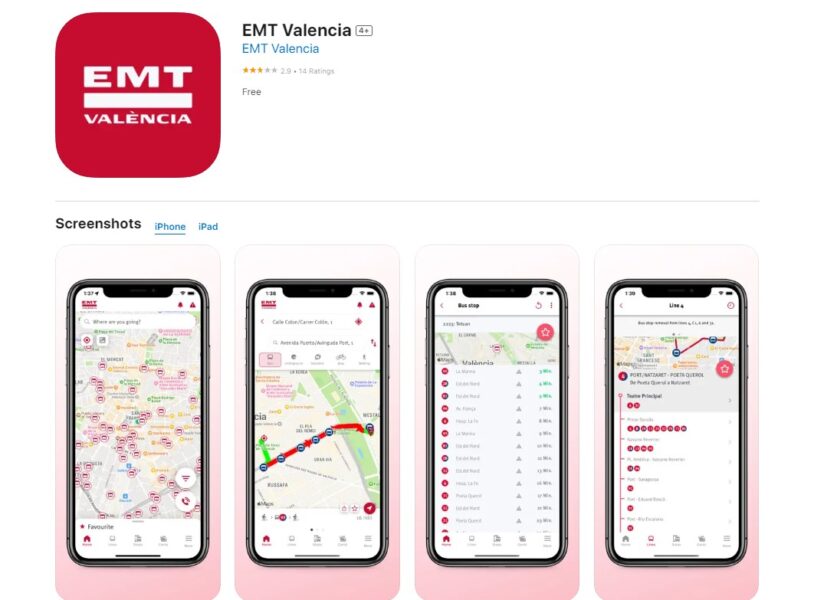
Getting Around Valencia
Valencia, one of the best places to visit in Spain for first-timers, boasts an efficient and comprehensive public transportation system.
The metro network covers the city and surrounding areas, making navigating easy.
Buses operate extensively throughout Valencia, providing convenient access to all major attractions.
The tram system serves the coastal and northern parts of the city and offers scenic routes. Taxis are readily available and relatively affordable for quick trips.
Metro, tram, and bus information is available on the EMT Valencia App.
Biking is popular, with dedicated bike lanes and rental services allowing you to explore the city at your own pace.
For tourists, the Valencia Tourist Card offers unlimited travel on public transport and discounts at various attractions, making it easier to explore the best cities to visit in Spain for first-timers.

Currency (Money)
When visiting Spain, the official currency is the Euro (€).
You can easily exchange money at banks, exchange bureaus, and ATMs, which are widely available in all the best cities to visit in Spain, including Barcelona, Madrid, Seville, Granada, and Valencia.
Credit and debit cards are accepted almost everywhere, but it is advisable to carry some cash for small purchases or in rural areas.
It’s also helpful to inform your bank of your travel plans to avoid any issues with card transactions.
Spain offers competitive exchange rates, making it a convenient and accessible country for currency exchange.
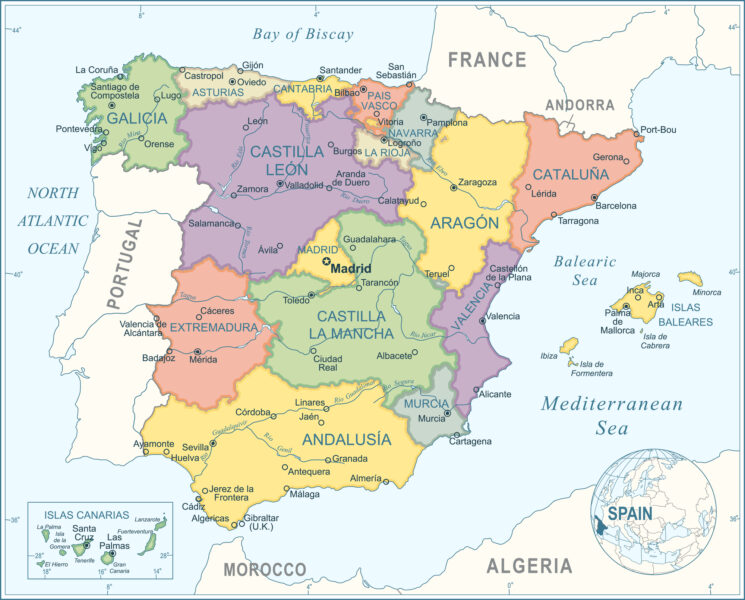
How to Get There
Spain is among the best places for first-timers due to its excellent connectivity. Major cities like Madrid, Barcelona, Seville, Granada, and Valencia are served by international airports, with Madrid-Barajas and Barcelona-El Prat being the busiest.
Numerous airlines offer direct flights from North America, Europe, and other parts of the world to these cities in Spain to visit. Additionally, Spain is well-connected by high-speed trains (AVE) and an extensive bus network, making intercity travel easy and convenient.
If traveling from neighboring European countries, consider driving or taking a train to experience the scenic routes.
Safety
Spain is considered one of the best countries for first-timers due to its high safety standards. It is generally a safe country for travelers, with low levels of violent crime.
However, petty crimes like pickpocketing can occur, especially in crowded tourist areas and public transport. It’s advisable to stay vigilant, keep your belongings secure, and avoid displaying valuables.
Major cities like Madrid, Barcelona, Seville, Granada, and Valencia have strong police presences, ensuring the safety of locals and tourists. Emergency services are reliable; English-speaking assistance is often available in tourist areas.
Language
The official language of Spain is Spanish (Castilian), which is spoken universally across the country.
Additionally, Spain has several regional languages, such as Catalan in Barcelona, Basque in the Basque Country, and Galician in Galicia.
English is commonly spoken in tourist areas, hotels, and restaurants, particularly in major cities like Madrid, Barcelona, Seville, Granada, and Valencia.
Learning a few basic Spanish phrases can enhance your travel experience and is appreciated by locals. Most signage, menus, and tourist area information are in Spanish and English.

Voltage & Power Plugs
In Spain, one of the best places to visit in Spain for first-timers, the standard voltage is 230 V, and the frequency is 50 Hz.
The power plugs and sockets are of type C and F, with two round pins.
Travelers from North America and other regions using different plug types will need a plug adapter. Additionally, you will require a voltage converter if your devices are not dual voltage (110-240 V).
It’s advisable to check your electronic devices before traveling to ensure compatibility. Adapters and converters are widely available in electronics stores and airports in all the best cities to visit in Spain.

Travel Guide to Spain
Spain is a relatively small country of only 47 million people but has an amazing wealth of historic and natural attractions.
Go there to see the palace where Christopher Columbus met with Queen Isabella, one of the world’s oldest and most beautiful university cities, and a city awash with stunning modern architecture.
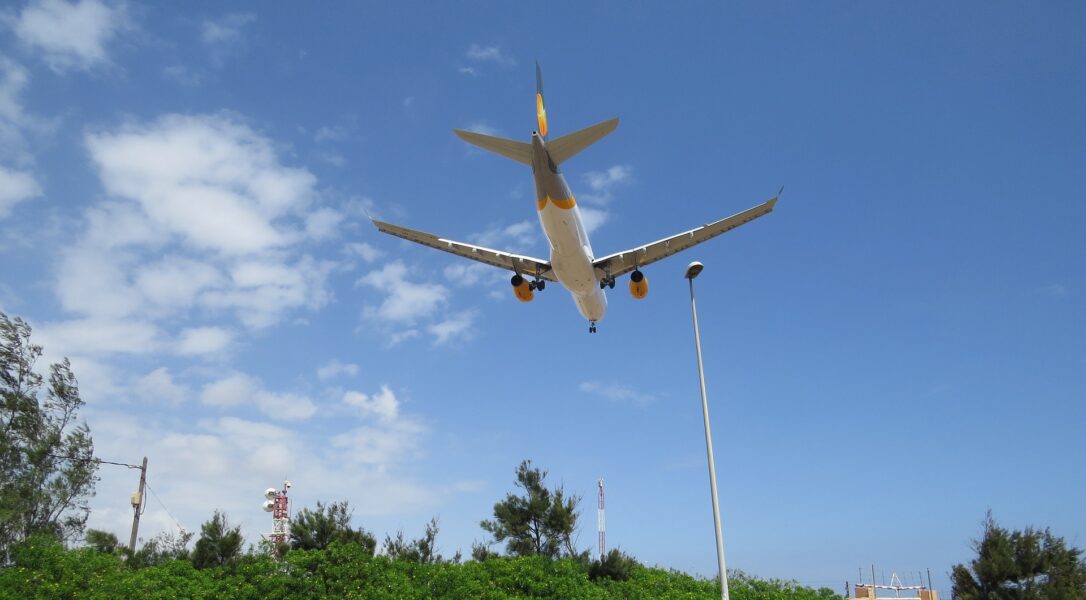
Airports & Entry
It’s possible to enter Spain by air, land, or sea. The best method depends upon where you want to arrive in Spain and where you’re coming from.
Air
If traveling a long distance to Spain, the best way is by air. Spain has 47 public airports and many international flights to all parts of the country.
When booking your flight, consider what you want to see in Spain and where the cheapest flights go. You can check flight prices to different Spanish cities on comparison websites like Omio.
For example, I was planning a trip recently and wanted to see Barcelona, Madrid, and Granada. When I wanted to fly, I discovered that flights from London to Granada were relatively expensive. Still, flights to the two busiest airports in Spain, Madrid-Barajas and Barcelona El Prat, were cheaper.
So, I decided to fly to Barcelona and use it as the start and endpoint of my mini tour of Spain.
Land
A high-speed train is also an option if you travel from Portugal or France to Spanish cities close to their borders. For example, you can travel from Lisbon in Portugal to Salamanca in Spain within 6 hours and 28 minutes for as little as $25 if you book in advance.
Buses can also be taken between these countries for travelers on a budget with oceans of time. For example, a coach from Toulouse in France to Barcelona in Spain takes 6 hours and 15 minutes and can cost as little as $18!
Sea
There are also ferries to Spain. For example, you can catch a ferry from Portsmouth in England to Santander in Spain that takes 28 hours and 30 minutes for €219. However, you’d probably only want to take that long if you were taking your vehicle along, which would cost at least €408.
The most popular ferry to Spain is from Tangier, Morocco, to Tarifa, Spain. This short crossing only takes one hour and costs around €40.
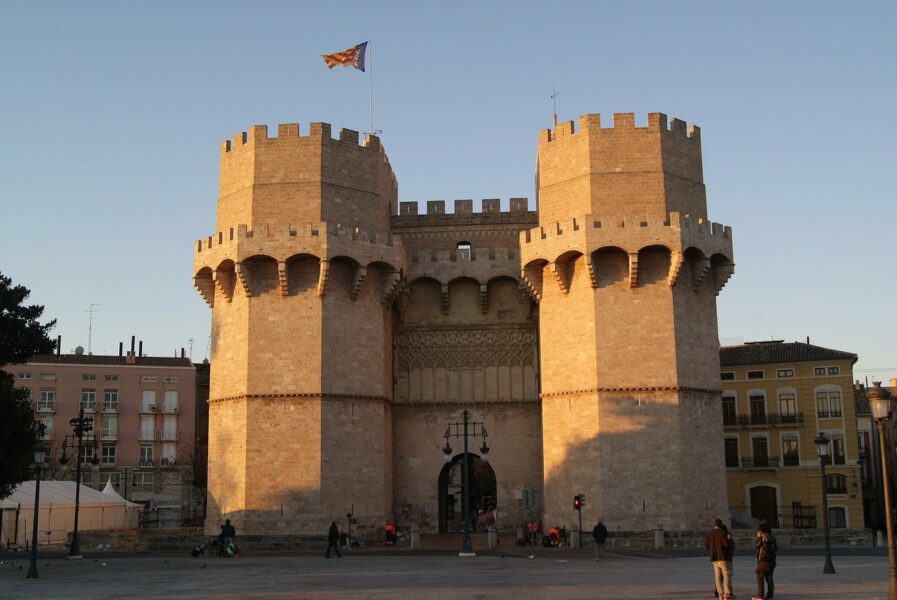
History of Spain
Prehistory & Roman period
The earliest evidence of modern humans in Spain is cave paintings found in Cantabria, created between 35,600 BCE and 13,500 BCE. During the last Ice Age, the Iberian Peninsula became a refuge for humanity escaping the cold.
Toward the end of prehistory, two cultures lived on the peninsula: the Iberians to the east and the Celts to the west.
Sometime between 210 BCE and 205 BCE, the Romans began to invade the Iberian Peninsula. Their invasion was piecemeal, and it took almost 200 years. The Romans remained for over 600 years and called the peninsula Hispania, from which we get the modern name España or Spain.
The previously Celtic and Iberian people were completely Romanized, and much of Spain’s culture today comes from the Roman period—the language (an evolved form of Latin), religion (introduced during the 1st century CE, and the basis of Spanish law.
Moorish Spain
During the 8th century, the Moors from North Africa invaded the Iberian Peninsula. They conquered vast areas between 711 and 718, but resistance began almost immediately.
During the Moorish presence on the peninsula, a unique mixed Roman and Moorish culture evolved, and many beautiful monuments were built, including the fortress of Alhambra, built in 889 atop an old Roman fort, and converted into an amazing royal palace in 1333.
The Moors retained a presence in Iberia for over 800 years. Still, in 1492, the last Moorish territory surrendered to the joint monarchs Queen Isabella I of Castile and King Ferdinand II of Aragon. They united many previously independent countries and made the Alhambra their palace.
From there, Isabella sponsored Christopher Columbus’s expedition to find a new route to India in the west.
Spanish Empire
Also in 1492, Columbus arrived in the New World, and the great Spanish Empire began. The empire grew so vast that today, Spanish is the second most common first language in the world behind Mandarin (English is third, though its popularity as a second language has made it the most common language in the world).
For almost 300 years, Spain was the richest and most powerful nation in Europe. However, from 1793 onward, it ran into what I can only describe as a catastrophic sequence of unlucky choices. First, it declared war against the new French Republic and lost.
Second, it decided to join France in the early Napoleonic Wars, only to lose its naval fleet after the disaster of the Battle of Trafalgar. Third, it invited French troops into Spain to attack Portugal, only for them to take over all the Spanish forts and conquer Spain against zero resistance.
The common Spanish people resisted French occupation, and the word “guerrilla” is a Spanish word that came into English when it was used to refer to the resistance fighters who helped Portuguese and British troops in their war against France in the Iberian Peninsula.
Despite Napoleon’s defeat, Spain’s bad luck and frequent side-changing left the nation politically divided, unstable, and bankrupt.
Modern Spain
In 1936, the Spanish Civil War began. This bitter three-year struggle was a precursor for WWII.
Nazi Germany and Fascist Italy supported General Franco’s Spanish Nationalist forces against the Republic. And the Republic was supported by the Soviet Union and international volunteers of people who loved freedom, like George Orwell and Pablo Neruda.
Mainly due to Great Britain’s shameful appeasement policies and refusal to join the fight, Franco won, and a dictatorship was formed that lasted until his death of natural causes in 1975.
In the years following Franco’s death, the nation gradually slipped back into democracy, adopting the 1978 Constitution.
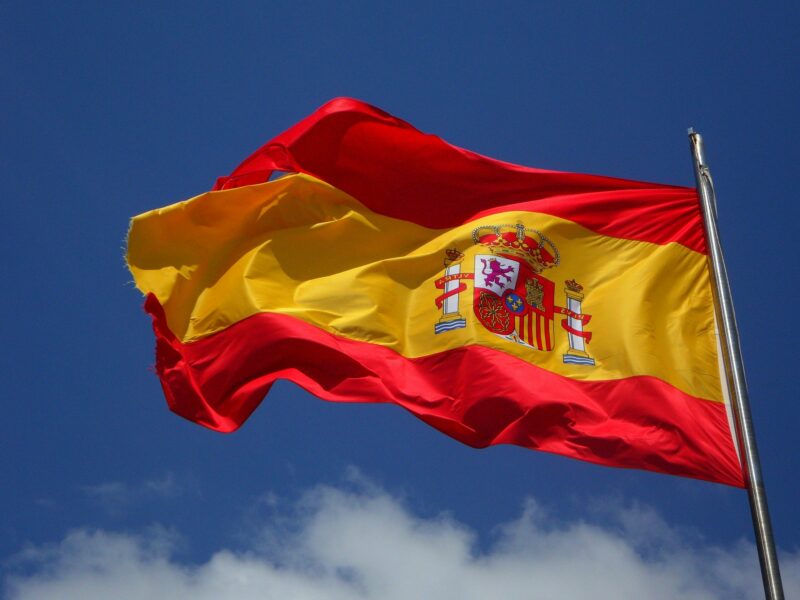
A Fact File of Spain
- Location: Southwestern Europe on the Iberian
Peninsula. - Population: 46,733,038 (2018)
- Ethnicity: Indigenous Spanish 88%, Latin
American 5%, North African 2%, Eastern European 2%, Sub-Saharan African 1%, and
others 2%. - Area: 195,360 square miles.
- Capital city & largest city: Madrid.
- Climate: Much like its cuisine, Spain’s climate
is divided into three regions: Mediterranean, Atlantic, and Interior.
Along the Mediterranean coast and stretching far inland, the summers are hot
and dry and winters mild. Along the Atlantic coast, an oceanic climate results
in cool summers and mild winters. And some interior regions experience a
semi-arid climate. - Official language: Spanish. 74% of Spaniards
speak this as their mother tongue. - Other languages: Catalan 17%, Galician 7%,
Basque 2%, and Occitan (only 5,000 speakers). The Spanish constitution requires
every Spanish citizen to be fluent in Spanish but at the same time provides
legal protection to these four other languages as official languages of Span. - Religion: 70% Roman Catholic, 25 atheist, and 5%
other. - The current head of state: King Felipe VI.
- Current Prime Minister: Pedro Sanchez. There are
also two “presidents” in the Spanish government, but they are ranked below the
King and Prime Minister. - Time zone: Central European Time, which is UTC+1.
- Currency: Euro €.
- Country dialing code prefix: +34.
- Emergency numbers: 112. You can use other numbers, but 112 is easy to remember and gets you everything.
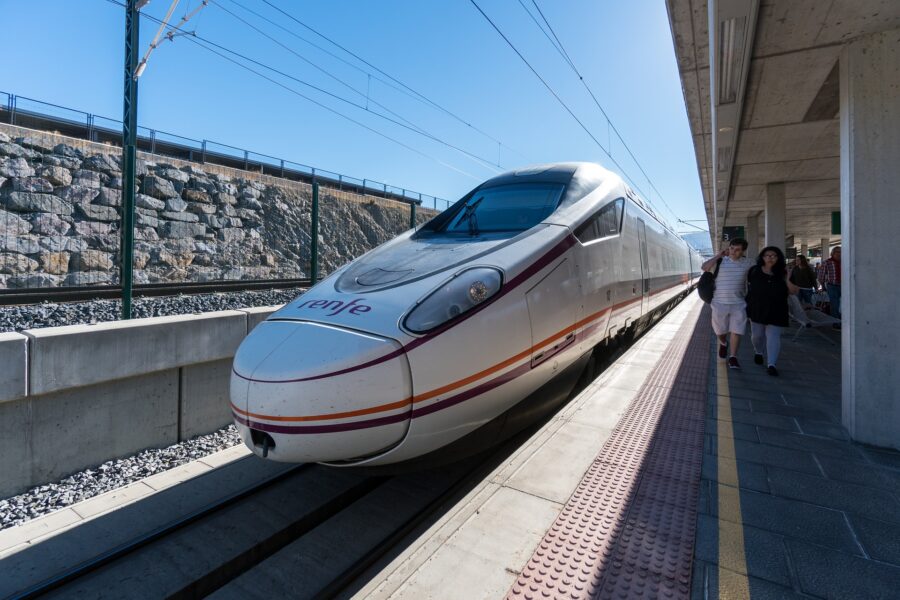
Getting Around Spain
The three easiest ways to get around Spain are by train, plane, or bus.
Train
Spain boasts the most extensive high-speed railway network in Europe, with trains reaching up to 190 mph. Traveling around Spain is often the best option.
If you’re on a budget, you can purchase a second-class Eurail One Country Pass to enjoy eight days of unlimited regular trail travel within one month for only $319.
However, you must pay an extra booking fee to travel on a high-speed train, and Europeans cannot buy a Eurail ticket. However, Europeans can purchase an Interrail Ticket.
Plane
Although trains are usually the cheapest option, it’s always best to check on a comparison website like Omio. For example, I can buy a Renfe high-speed train ticket from Barcelona to Madrid for $64, and the journey will take 2 hours 30 minutes.
But I could purchase a Vueling flight for $46 that takes 1 hour 20 minutes. Of course, you have the hassle and extra expense of getting from the airports to the city centers, so consider this when deciding what’s best for you.
Overall, I’d say if you’re only visiting a few cities that are far apart, like Barcelona and Granada, then flying between them might be best for you. And if you want to travel to the Canaries or the Balearic Islands, flying is essential.
But if you hope to spend a month in Spain and travel everywhere on the mainland, a Eurail pass will save you money and conveniently take you from city center to city center.
Bus
I would not generally recommend exploring Spain by bus because trains are much more comfortable and quicker. However, long-distance coaches are often much cheaper if you have plenty of time and a tight budget.
For example, the journey between Barcelona and Madrid would cost only $39 on an ALSA coach and take you from the city center to the city center. However, it would take you 7 hours and 35 minutes.
Two good reasons to travel by bus are to see more of the countryside up close and to explore remote, rural places the trains don’t reach.
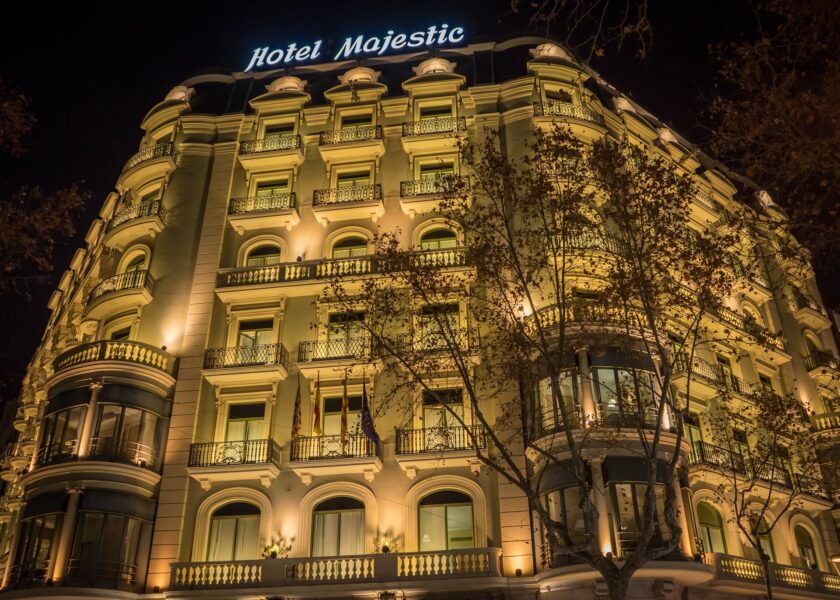
Accommodation in Spain
Hotels in Spain are generally affordable, with basic rooms for around $50 a night and standard rooms for about $100. However, you’ll find accommodation in Barcelona and Madrid much more expensive than the average.
Rates are also seasonal, but high season is different in different areas, so you’ll have to research the conditions of the places you want to visit.
Book in advance to ensure you get the kind of room you want where you want it. Online booking almost always provides the best deals.
Paradores
The top luxury hotels in Spain are called paradores. They are often converted to historic mansions or castles in beautiful locations.
For example, the Parador de Santiago de Compostela is reputed to be the oldest hotel in the world and occupies a 15th-century hospital. The Parador de Siguenza occupies a castle with a long history of Roman times.
Hotels and Hostels
Hotels in Spain are either hotels (with a full range of services) or hostels (budget hotels). There is little difference in price or standard between a 1-star hotel and a hostel.
Above three stars, you’ll start to see big differences in quality, and 5-star are plush, luxurious hotels.
Guesthouses
You’ll find pensions, fonda, and residencia in Spain. Pensiones are budget guesthouses, but fondas have a restaurant attached. Bed & breakfasts are becoming common in Spain.
Watch out for signs outside regular houses saying “habitaciones” (rooms) or “camas” (beds), though many guesthouses use the English B&B sign.
Villas and apartments
You’ll find lots of villas and apartments around Spain available to rent for a week. Most of these are around the traditional family holiday hotspots, like the coastal resorts or the Balearic Islands.
You can find many holiday rental agencies online, such as Simply Owners.
Campsite
If you love the great outdoors, you’ll be happy to hear that there are hundreds of authorized campsites across Spain. They generally charge around €6 per tent and an additional €6 for each person staying. However, the most popular sites may be significantly more expensive.
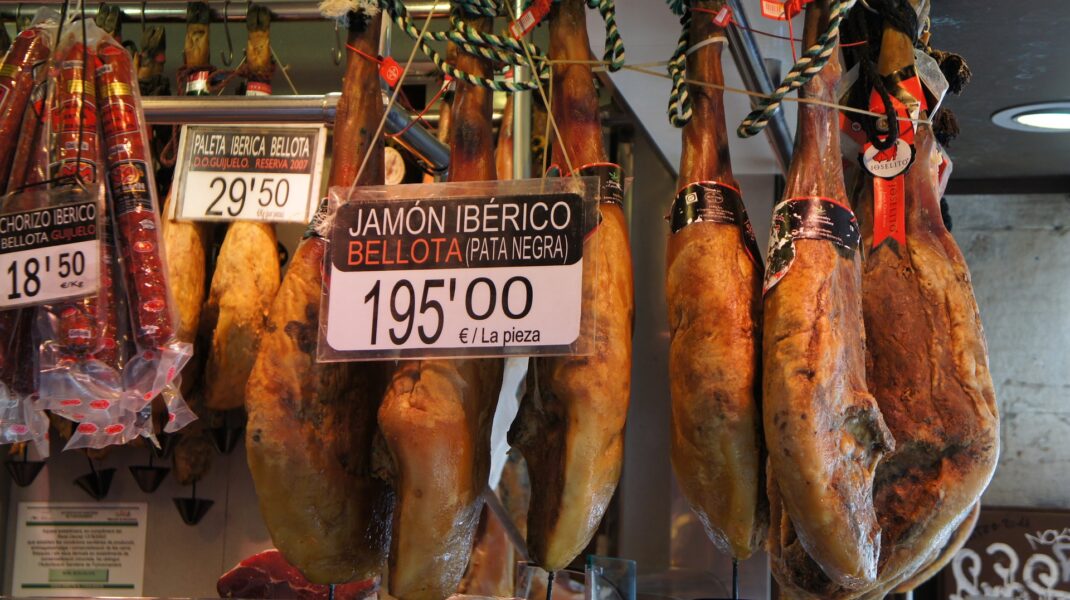
Spanish Food
Because of Spain’s rich history with Roman, African, and Mediterranean influences, you’ll find many dishes around the country. There are three obvious divisions: the Mediterranean around the eastern and southern coast, the Atlantic along the northern coast, and Inland Spanish food.
Mediterranean
Spanish Mediterranean food features lots of seafood and several signature dishes. Andalusia is Spain’s most southerly region, so they love to eat cold soups like gazpacho on hot summer days. In gazpacho, you’ll find crushed cucumber, onion, pepper, tomato, and garlic, with the predominant olive oil in Mediterranean cuisine.
You can’t talk about Mediterranean cuisine or mention calamari a la Romana. Battered, deep-fried squid served with lemon and salt is a popular dish along the coast.
You’ll also find rice-based dishes like arros negre from Catalonia and the more famous paella from Valencia. The important ingredients in a truly traditional Valencian paella are rabbit and chicken. However, many other coastal areas feature seafood paellas.
Atlantic
Along the Atlantic coast, they eat hot, fish—or vegetable-based stews like fabada Asturiana, marmitako, and caldo Gallego. Chorizo is a popular sweet and spicy sausage usually made with plenty of garlic.
Specific chorizo recipes are found around the region, like chorizo Riojano. Chorizo is a key ingredient in fabada Asturiana, a white-bean stew from Asturias.
Inland
You’ll find lots of preserved food in the central regions, like Manchego cheese and Spanish ham. Thick, hot soups and stews are also popular, such as cocido madrileño. Traditional jamon Iberico dry-cured ham is made from Black Iberian pigs and features a distinctive rich, savory taste.
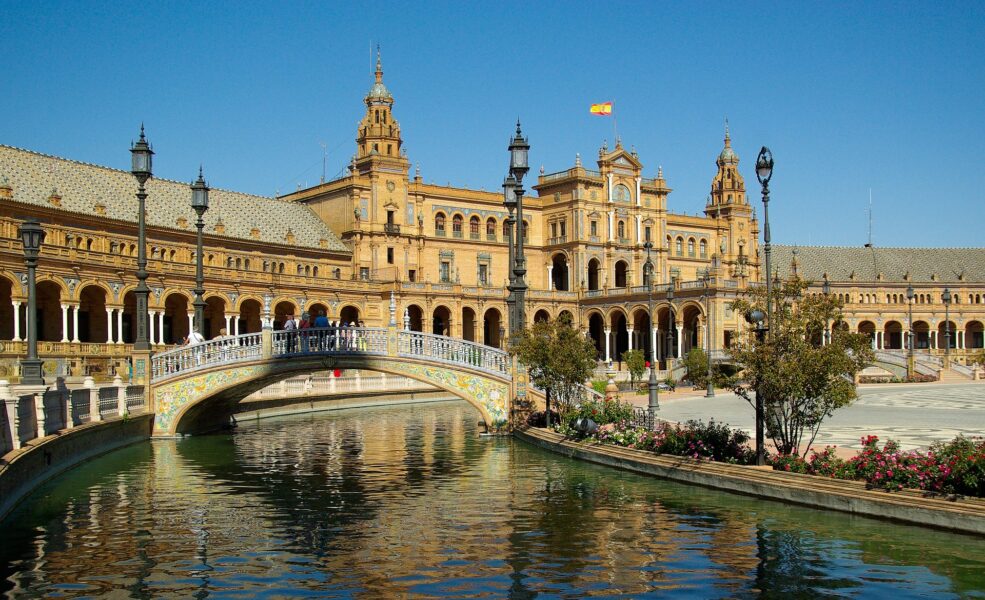
More Things to See & Do in Spain
The Alhambra
When I think of Spain, I first think of Granada and its famous Alhambra Palace. Sitting on a hill above the city, this breathtaking Moorish fortress and royal palace is one of the best-preserved examples of early Islamic architecture. It features marble fountains, beautiful mosaics, and stunning vistas.
The complex is an amazing monument to Spain’s rich history. It began life as a Roman fort before the Moors constructed a larger fortress over the Roman remains in 889. And that fortress was transformed into this amazing palace in 1333. It’s the palace where Queen Isabella met Christopher Columbus and sponsored his crazy mission to find a western route to India.
The Grand Mosque of Cordoba
The Alhambra was not the only Moorish building to survive the Reconquista. The Grand Mosque of Cordoba was originally built in 784 but saw considerable expansion before the city of Cordoba fell back into Catholic hands in 1236.
Fortunately, instead of demolishing this beautiful building, the Church converted it into an amazing cathedral. Its prayer hall features nineteen aisles, and its rounded Moorish arches and rows of columns form perfect symmetrical patterns to please the eye.
Seville
Seville is the most beautiful city in Spain and the capital of Andalucía. It’s famous for its energetic flamenco dancing and amazing architecture.
It contains the Alcazar, a royal palace with stunning gardens originally built as a Moorish fortress in 712 and converted into a royal palace following the local Reconquista in the 14th century. La Giralda tower is the symbol of the city—built as a minaret, but now all that remains of the Grand Mosque of Seville.
Seville Cathedral is one of Europe’s largest and is renowned for its gilded altar statues. It is also where Christopher Columbus’ monumental tomb is located.
Salamanca
This university city in western Spain is a UNESCO World Heritage Site and boasts the third oldest university in the “West.” The University of Salamanca was founded in 1218 and became the first university in the world to be granted official university status by the Vatican.
Because Spanish is such an important language today, Salamanca attracts thousands of language students worldwide.
If you’ve ever visited Oxford, Cambridge, or Harvard, think about buildings like those on Acid. I mean, much more ornate, colorful, and flashy, like the difference between the interiors of a Catholic and a Baptist church. The university is quite simply sublime.
Andalucía
From Seville, explore the small white towns scattered across the hilltops in this region. Arcos de la Frontera is a breathtaking town with a labyrinth of cobbled streets and traditional craft shops where you can buy local ceramics. It also features a Moorish castle, orange and almond orchards, and a beautiful plaza with a Gothic church.
Sierra de Grazalema Natural Park is a great location to experience the local landscape and see picturesque hilltop villages of white houses. The region’s karst limestone geology means many fascinating caverns to explore.
The Guggenheim
The Guggenheim Museum in Bilbao is an iconic structure of glass, limestone, and titanium that must be seen to be truly appreciated. No photograph can completely capture its magic.
Inside the Guggenheim Museum, you can discover a permanent collection of 250 pieces of modern art alongside a constantly evolving display of visiting exhibits.
This building alone has transformed Bilbao’s fortunes, making it one of the top tourist destinations in Spain and the recipient of the Best European City at the 2018 Urbanism Awards.
Barcelona
Barcelona is Spain’s second city and may become a capital if the Catalan Independence Movement exists. The city is rich in history but is more famous for its stunning modern architecture, particularly Gaudi’s renowned Sagrada Familia minor basilica.
This fantastic yet incomplete church is a strange combination of Gothic grandeur and surreal art. Because it is such a huge construction project, it will not be completed until around 2026. But, unfinished as it is, it is Barcelona’s most famous landmark.
You can see more of Gaudi’s work around the city, including Gaudi’s Casa Mila and Parc Guell.
But there’s more to Barcelona than just modern art. The tree-lined La Rambla boulevard in the city center is a wonderful place to stroll on a warm summer evening. It’s where you’ll find the living statues, street musicians, and pavement artists that remind you that art isn’t just history in Barcelona—it’s here and now!

More on Safely
Spain is relatively wealthy and safe, and few travelers experience problems.
The obvious exception concerns the huge number of youths who descend upon the Balearic Islands during summer every year, where alcohol-related violence caused by tourists in coastal resorts can be an issue. But people who are on family holidays or backpackers exploring the cultural sites see little crime.
Theft
The main problem you might encounter is petty theft by pickpockets, bag snatchers, hotel room break-ins, and muggings.
This is not because it’s Spain, but because this kind of thing happens in any big city. In cities like Barcelona and Madrid, you should avoid deserted streets or parks after dark and stick to public places with many people.
If you can, look less attractive to opportunist thieves. Keep valuables out of sight, store your money in a money belt or front jeans pocket, and try not to look like a tourist. When taking cash from an ATM or using a card to pay, cover your hand when you input your PIN code.
If you are in a hire car, the decals and number plate give you away. Some thieves have operated by puncturing tires at gas stations or rest areas and pretending to offer help while stealing your stuff.
Personal Safety
When visiting a bar or going on a tour, tell a friend or relative where you are going and arrange to check in when you return to your accommodation. Don’t accept drinks from strangers, and keep an eye on the glass of wine you have bought. If you must go to the restroom, finish your drink first or abandon it.
Be careful crossing the road—you cannot assume that road users in Spain follow the same rules you grew up with. Avoid wearing earphones that distract you and limit your situational awareness.
Before you set off on your vacation, it’s always a good idea to check with your government’s foreign affairs department concerning conditions in the county you’re traveling to.
If you’re American, this would be the Bureau of Consular Affairs. Sometimes, there are specific issues, such as planned demonstrations or terrorist threats, that affect the citizens of a specific nation when traveling abroad.

What I Love About Spain
I love ancient architecture. In places like Granada, you can see some of the world’s most beautiful early Islamic buildings and monuments. Because many of these structures have remained relatively untouched since the Reconquista, they’re better preserved than similar landmarks in Arabic countries.
Moreover, Spain is a safe place to visit compared to other places with comparable monuments, like Syria, Iran, and Iraq.
Robert’s passion for nature and history began early when he preferred museums over beaches. An archaeology and anthropology graduate from Cambridge, he volunteered across the UK and explored China. Now, he writes about his adventures while his kids drag him to beaches and theme parks.



![How to Use Apple AirTags as Luggage Tracking Tags - [year] Update](https://theflightguy.com/wp-content/uploads/2024/06/image-140-390x220.png)

